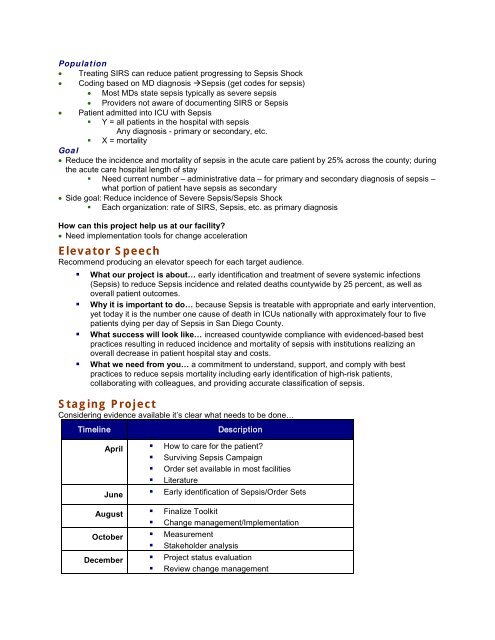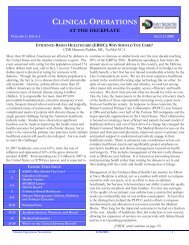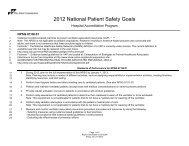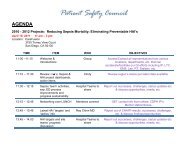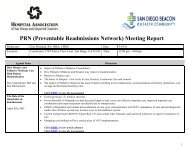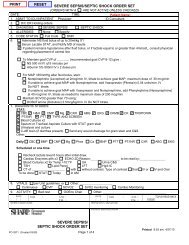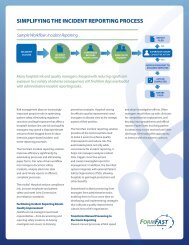Sepsis Mortality Reduction Project Charter - Patientsafetycouncil.org
Sepsis Mortality Reduction Project Charter - Patientsafetycouncil.org
Sepsis Mortality Reduction Project Charter - Patientsafetycouncil.org
Create successful ePaper yourself
Turn your PDF publications into a flip-book with our unique Google optimized e-Paper software.
Population<br />
• Treating SIRS can reduce patient progressing to <strong>Sepsis</strong> Shock<br />
• Coding based on MD diagnosis <strong>Sepsis</strong> (get codes for sepsis)<br />
• Most MDs state sepsis typically as severe sepsis<br />
• Providers not aware of documenting SIRS or <strong>Sepsis</strong><br />
• Patient admitted into ICU with <strong>Sepsis</strong><br />
• Y = all patients in the hospital with sepsis<br />
Any diagnosis - primary or secondary, etc.<br />
• X = mortality<br />
Goal<br />
• Reduce the incidence and mortality of sepsis in the acute care patient by 25% across the county; during<br />
the acute care hospital length of stay<br />
• Need current number – administrative data – for primary and secondary diagnosis of sepsis –<br />
what portion of patient have sepsis as secondary<br />
• Side goal: Reduce incidence of Severe <strong>Sepsis</strong>/<strong>Sepsis</strong> Shock<br />
• Each <strong>org</strong>anization: rate of SIRS, <strong>Sepsis</strong>, etc. as primary diagnosis<br />
How can this project help us at our facility?<br />
• Need implementation tools for change acceleration<br />
Elevator Speech<br />
Recommend producing an elevator speech for each target audience.<br />
• What our project is about… early identification and treatment of severe systemic infections<br />
(<strong>Sepsis</strong>) to reduce <strong>Sepsis</strong> incidence and related deaths countywide by 25 percent, as well as<br />
overall patient outcomes.<br />
• Why it is important to do… because <strong>Sepsis</strong> is treatable with appropriate and early intervention,<br />
yet today it is the number one cause of death in ICUs nationally with approximately four to five<br />
patients dying per day of <strong>Sepsis</strong> in San Diego County.<br />
• What success will look like… increased countywide compliance with evidenced-based best<br />
practices resulting in reduced incidence and mortality of sepsis with institutions realizing an<br />
overall decrease in patient hospital stay and costs.<br />
• What we need from you… a commitment to understand, support, and comply with best<br />
practices to reduce sepsis mortality including early identification of high-risk patients,<br />
collaborating with colleagues, and providing accurate classification of sepsis.<br />
Staging <strong>Project</strong><br />
Considering evidence available it’s clear what needs to be done…<br />
Timeline<br />
Description<br />
April • How to care for the patient?<br />
• Surviving <strong>Sepsis</strong> Campaign<br />
• Order set available in most facilities<br />
• Literature<br />
June • Early identification of <strong>Sepsis</strong>/Order Sets<br />
August • Finalize Toolkit<br />
• Change management/Implementation<br />
October • Measurement<br />
• Stakeholder analysis<br />
December • <strong>Project</strong> status evaluation<br />
• Review change management


